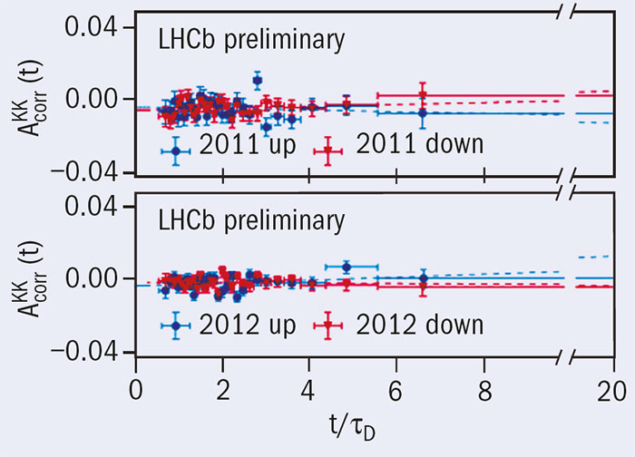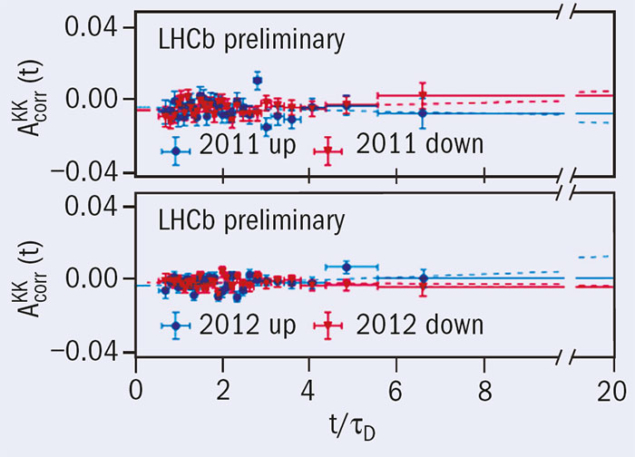
The LHCb collaboration presented new results at the 8th International Workshop on Charm Physics (Charm 2016), which took place in Bologna on 5 to 9 September. Among various novelties, the collaboration reported the most precise measurements of the asymmetry between the effective lifetime of the D0 meson (composed of a c u quark pair) and that of its anti-partner, the D0 meson, decaying to final states composed of two charged pions or kaons. Such an asymmetry, referred to as AΓ, differs from zero if and only if the effective lifetimes of these particular D0 and D0 decays are different, signalling the existence of CP-violating effects.
The invariant-mass distribution of D0 → K+K– decays from one of the two analyses.
CP violation is still unobserved in the charm-quark sector, and its effects here are predicted to be very tiny by the Standard Model (well below the 10–3 level in this specific case). Thanks to the unprecedented sample sizes that LHCb is accumulating, it is only now that such a level of precision on these CP-violating observables with charm-meson decays is starting to be accessible.

Charm mesons are produced copiously at the LHC, either directly in the proton–proton collisions or in the decays of heavier beauty particles. Only the former production mechanism was used in this analysis. To determine whether the decaying meson is a D0 or a D0 (since they cannot be distinguished by the π+π– or K+K– common final state), LHCb reconstructed the decay chains D*+ → D0 π+ and D*– → D0 π– so that the sign of the charged pion could be exploited to identify which D meson was involved in the decay. Two distinct analysis techniques were developed (see figure). The results of the two analyses are in excellent agreement and are consistent with no CP violation within about three parts in 104. These constitute the most precise measurements of CP violation ever made in the charm sector, with the full Run 2 data set expected to reduce the uncertainties even further.








